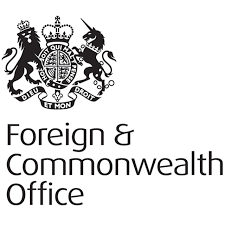PRESS RELEASE : New ground-breaking framework to help identify opportunities to intervene earlier to prevent homicides [November 2022]
The press release issued by the Mayor of London on 16 November 2022.
- The Mayor of London’s Violence Reduction Unit publishes framework to learn more about the complex causes of homicides
- New framework to help VRU and the Met police to identify where to deliver targeted interventions to reduce violence
- Report shows annual cost of homicides in London is more than £120 million
London’s Violence Reduction Unit (VRU), set up by the Mayor, has today published a new ground-breaking framework that for the first time, analyses police data to better understand the drivers of homicide and identify opportunities to intervene earlier.
In the first of its kind, a framework funded by the VRU has been developed to assist the Met police, the VRU and other agencies to learn more about the causes of all forms of homicide and help to answer complex questions, such as how many homicide victims knew their perpetrator, or the role social media plays in the run-up to a homicide.
The Mayor is determined to continue being both tough on crime and tough on the complex causes of crime, which is helping to reduce violence in London. However, there is still a long way to go and the VRU’s new framework stands to help reduce the spread of violence further by providing greater intelligence to violence reduction experts and helping them to determine where to deliver early and targeted interventions.
It comes as figures in the report published today show alongside the emotional cost caused by the tragic loss of life and misery experienced by families and communities, the economic impact to the capital is also substantial. Each homicide is estimated to cost more than £800,000 to the police and criminal justice services, implying an annual London cost of over £120 million.
The VRU, which the Mayor set up in 2019 and was the first of its kind in England and Wales, commissioned the Behavioural Insights Team to work alongside the Met police to develop the framework using data from 50 homicide cases to capture behavioural and situational factors. Following its initial success in turning complex case notes into consistent data, the framework will now be used to analyse a further 300 cases with a view to it potentially being used more routinely in the capital.
Following development and testing, the framework has uncovered some early insights from the analysis of six factors in homicide:
- Mental health – specific mental health conditions posed a greater risk of homicide. Initial findings identified more cases where mental health was a contributing factor to homicide than were originally flagged by existing police codes. Undiagnosed mental health cases provide a clear opportunity for intervention.
- Drugs – Drug-related homicides were prevalent during testing, with nearly half coded as involving drugs. It meant drug-related homicides overlapped with all of the factors included in the analysis.
- Alcohol – Alcohol was more likely to contribute to homicides at particular times of day or key locations. A recommendation is to identify specific ‘at risk’ locations to target preventative measures.
- Gangs – Gang violence presents a particular homicide risk in relation to young people. It often relates to premeditated homicides, suggesting that there are more opportunities for intervention.
- Social media – Evidence shows that social media usage in homicides was more sophisticated than sharing threats or aggressive language online. It was also used to lure victims into a trap, plan attacks or discuss the incident. The framework also found that the ability to delete messages on Snapchat was known and used by individuals, and may explain why it was favoured in the context of committing violence. The number of touchpoints provided in these escalations is an opportunity to predict and prevent escalation.
- Patterns of escalation – Short-length immediate escalation cases do not provide many opportunities to intervene to de-escalate, however, cases with medium-length escalation could bear more opportunities for “cooling down” interventions, to prevent the escalation from becoming violent.
By looking at how each of these initial six factors interact, the new framework will allow us to have a far more detailed record of the personal circumstances surrounding the victim and perpetrator.
The analysis and insight that this opens up will help practitioners, police officers, policymakers, and researchers to better understand the drivers of homicide in the capital and highlight where to best target resources.
Capturing data and intelligence is key to the VRU’s approach to understanding and tackling violence – an approach that is based on partnership and is rooted in prevention and early intervention.
The report includes a series of recommendations that the VRU will take forward alongside the Met and BIT through the next phase of research and extensive coding of a further 300 homicides.
The Mayor of London, Sadiq Khan, said: “Tackling violence and making our city safer for all Londoners is my number one priority.
“My approach is to be tough on violence and tough on the complex causes of violence.
“This has led to violence reducing in London since before the pandemic, but one death caused by violence is one too many and it’s clear there is more to do to drive violence down in the capital.
“Part of our approach is better understanding why homicides happen and that’s why my VRU funded and commissioned this ground-breaking framework. If we are to continue reducing violence in London, it’s crucial that we identify more opportunities to intervene early because I firmly believe that violence is preventable, not inevitable.”
Lib Peck, Director of London’s Violence Reduction Unit, said: “The foundation of the VRU’s approach to tackling violence is to build an evidence base for what works and what doesn’t.
“It is the bedrock for identifying opportunities for the VRU and partners to intervene earlier to prevent violence from happening in the first place.
“This framework gives us the opportunity to do just that, and it shows the real value of the VRU working in partnership with the Met police to tackle violence through enforcement and prevention and early intervention.
“This report lays bare not only the crippling impact homicides have on families and communities, but the huge economic impact for our public services. It’s crucial we double down and build on the progress we have made in partnership to drive down violence across London.”
Detective Superintendent David Kennett from the Metropolitan Police Service said: “Homicides have a monumental effect on families and communities – one murder on the streets of London is one too many.
“We have been working closely with the Violence Reduction Unit, to get a better understanding of the driving factors behind homicides. This new framework shows tremendous promise, and means for the first time we can truly influence the criminal justice system by identifying where the risks lie.
“There are many contributing factors to each homicide – this new framework will help us work towards preventing homicides from both a policing and partner perspective.”
Ed Bradon, Director at the Behavioural Insights Team, said: “Understanding homicide is hard. Each individual case is complex, and patterns are difficult to spot when data is limited.
“Sometimes the best data is hiding in plain sight: it exists in some form already, but painstaking work is needed to make it really useful. Homicide case files presented one such opportunity.
“We are very excited about the potential of this framework to shed new light on a crime that blights our city. We hope it will give the Met police, the VRU and other agencies a powerful new tool, and one that can keep getting better over time.
“Improving our data so that we can really understand what’s happening – and which responses work – is at the heart of modern policing. London’s VRU and the Met deserve great credit for pursuing this vital and path breaking work.”



